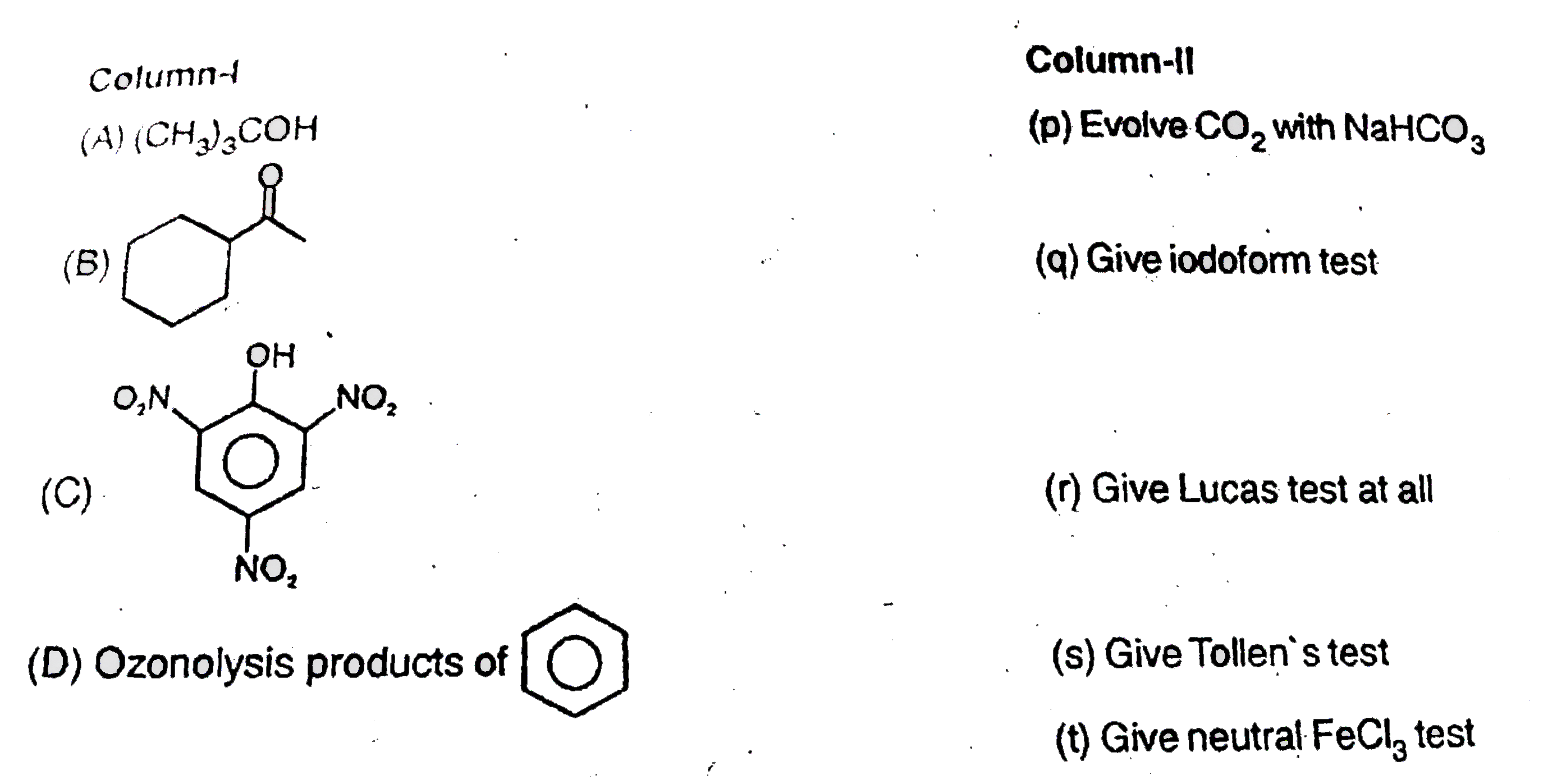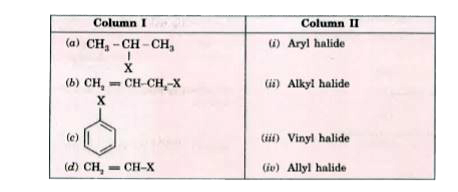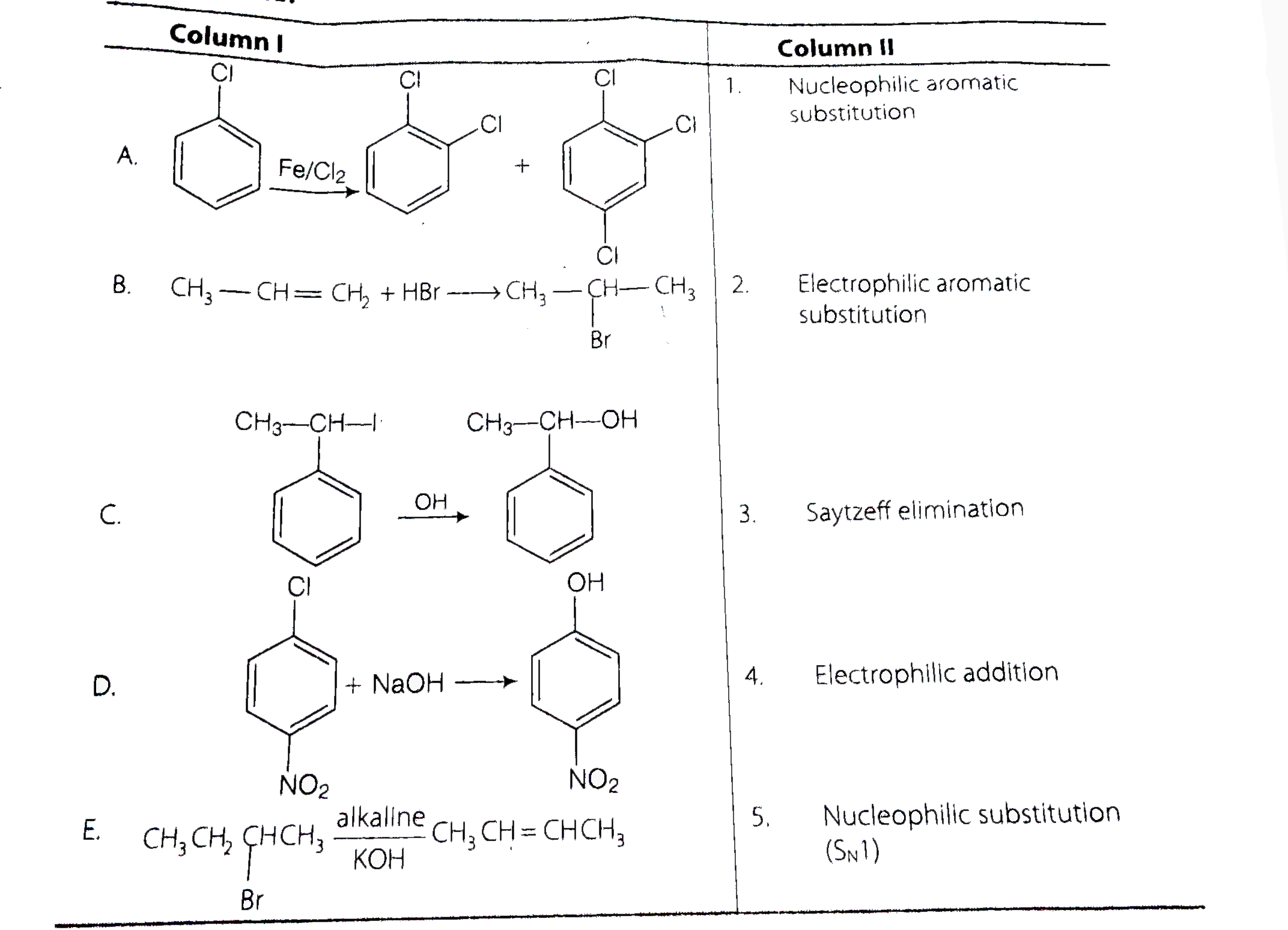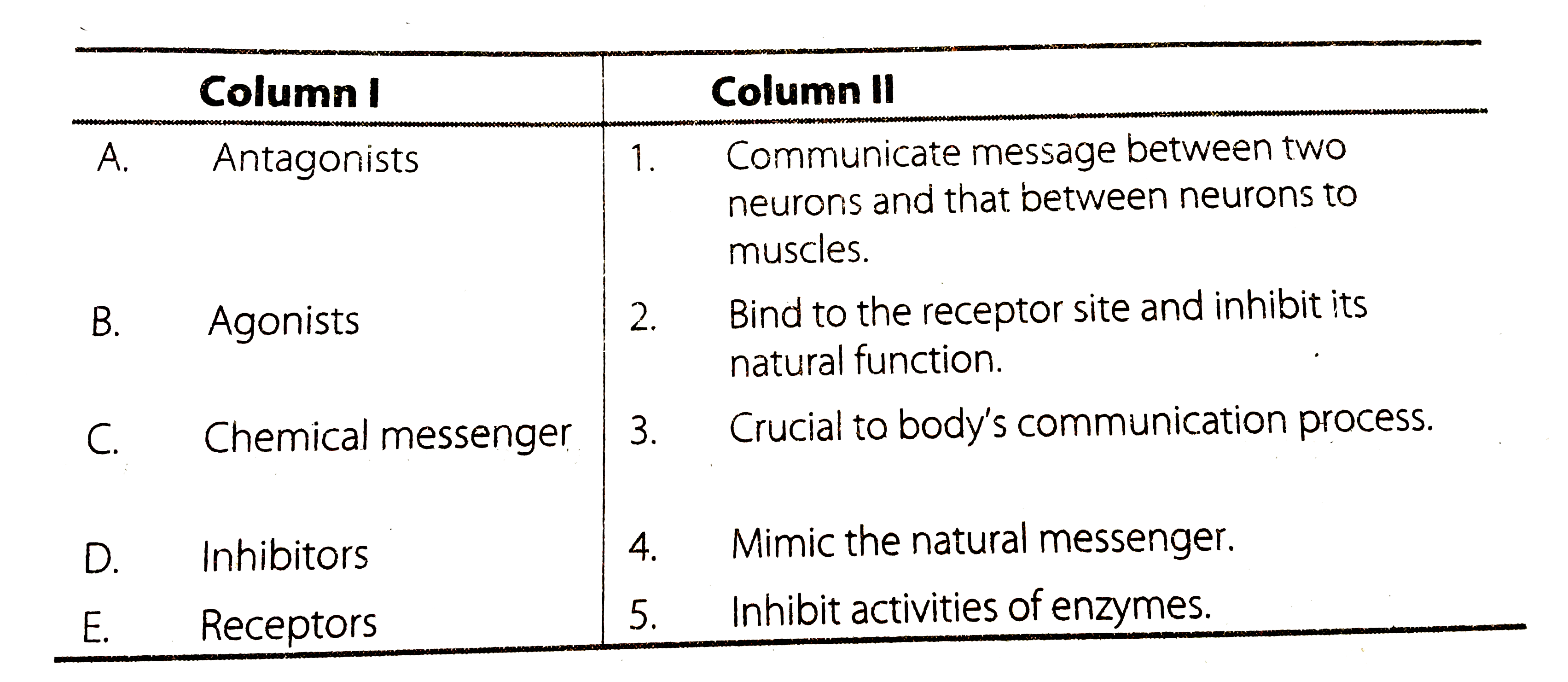Match the type of mixture of compounds in Column-I with the technique of separation/purification given in Column-II

(A−5),(B−4),(C−1),(D−2),(E−3)
(A) Two solids which have different solubilities in a solvent and which do not undergo reaction when dissolved in it-Crystallisation
(B) Liquid that decomposes at its boiling point -Distillation under reduced pressure (C ) Steam volatile liquid-Steam distillation
(D) Two liquids which have boiling points close to each other-Fractional distillation
(E ) Two liquids with large difference in boiling points-SImple distillation
Topper's Solved these Questions
- ORGANIC CHEMISTRY SOME BASIC PRINCIPLES AND TECHNIQUESBOOK - KUMAR PRAKASHANCHAPTER - ORGANIC CHEMISTRY SOME BASIC PRINCIPLES AND TECHNIQUESEXERCISE - Section -D -Assertion and Reason Type
12 Videos
- ORGANIC CHEMISTRY SOME BASIC PRINCIPLES AND TECHNIQUESBOOK - KUMAR PRAKASHANCHAPTER - ORGANIC CHEMISTRY SOME BASIC PRINCIPLES AND TECHNIQUESEXERCISE - Section -D - Long Answer Type
12 Videos
- ORGANIC CHEMISTRY SOME BASIC PRINCIPLES AND TECHNIQUESBOOK - KUMAR PRAKASHANCHAPTER - ORGANIC CHEMISTRY SOME BASIC PRINCIPLES AND TECHNIQUESEXERCISE - Section -D -Short Answer Type
54 Videos
- HYDROGENBOOK - KUMAR PRAKASHANCHAPTER - HYDROGENEXERCISE - Section-D NCERT Exemplar (Long Answer)
8 Videos
- QUESTION ASKED IN JEE -2018BOOK - KUMAR PRAKASHANCHAPTER - QUESTION ASKED IN JEE -2018EXERCISE - MCQ
10 Videos
Similar Questions
Match the type of mixture of compounds in Column I with the technique of separation /purifaction given in column II

View SolutionMatch the type of mixture of compounds in Column I with the technique of separation /purifaction given in column II

View SolutionMatch the given compounds in Column-I with their appropriate descriptions given in Column II.

View SolutionMatch the given compounds in Column-I with their appropriate descriptions given in Column II.

View SolutionMatch the structures of compounds given in Column I with the classes of compounds given in Column II.

View SolutionMatch the structures of compounds given in Column I with the classes of compounds given in Column II.

View SolutionMatch the reactions given in Column I with the type of reactions given in Column II

View SolutionMatch the reactions given in Column I with the types of reactions given in Column II.

View SolutionMatch the class of compounds given in Column I with their functions given in Column II.

View SolutionMatch the class of compounds given in Column I with their functions given in Column II.

View Solution
